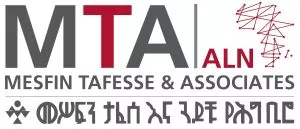Introduction
As part of the government's effort to update and modernize existing laws in the commercial sector, a number of laws have been revised and a few new ones have been enacted. Among such laws are the Movable Property Security Right Proclamation No. 1147/2019 ("MPSRP") and the Commercial Code of Ethiopia Proclamation No. 1243/2021 ("Commercial Code"). The Commercial Code replaced Books 1 (Traders and Businesses), 2 (Business Organizations), and 5 (Bankruptcy and Schemes of Arrangement) of the 1960 Commercial Code (the "Old Commercial Code"). The MPSRP governs security rights over movable properties and the Commercial Code generally governs commercial activities including bankruptcy. Previously, Book V of the Old Commercial Code regulated bankruptcy. Many of its provisions contained clauses that protect secured creditors from the effect of bankruptcy. However, it used ambiguous words which opened the door for unwarranted interpretations. By using this gap, subsequent legislations dealing with a bankrupt business had started to provide priority for different groups of creditors in a way that is not aligned with the Old Commercial Code. For instance, the Labour Proclamation No.42/1993 (and subsequent amendments to the Labour Proclamation) provided priority for claims arising from employment relations. In a case between Holland Cars vs Zemen Bank, the Cassation Bench of the Federal Supreme Court stated that the claims of employees and the tax authority have priority over a collateral than the claim of a secured creditor.
Moveable security rights are to be perfected, mainly, by way of registration of a notice at the Collateral Registry Office which has not yet started full operation. Currently, the office accepts the filing of notice only for security rights created in favor of banks. When it becomes fully operational, it is expected to greatly improve and launch the process of creation and enforcement of security right over movable property which is in turn expected to enhance access to finance. This article discusses the rights and obligations of creditors who have security rights over a movable property during bankruptcy proceeding based on the provisions of the MPSRP and Commercial Code. As the system which these laws envisage becomes fully operational and businesses start to make full use of it, the description in this article will have the opportunity to be tested in practical cases and court precedents.
Enforcement of Security Rights under the MPRSP
Before the MPSRP, security right over a movable property was regulated by different pieces of legislations: the Civil Code, the Commercial Code, the Capital Goods Leasing Proclamation, and the Warehouse Receipt System Proclamation. The MPSRP introduced a unitary system by which most security interests in movable property. Among the security interests that are out of the scope of MPSRP is right in securities traded on exchange.1
The MPSRP follows a functional approach whereby it brings under its scope agreements that have the effect of granting a property right on a movable property in order to secure payment or other performance of an obligation.2 Even if the parties do not designate the agreement as a security agreement or its purpose as creating a security right, the agreement will qualify as security agreement under the MPSRP if the purpose of the agreement is creating a right over a movable property in order to secure payment or performance of an obligation.
Parties to a security agreement, to have a priority right over the collateral, are required to make the security right effective against third parties ("perfection") in accordance with the different perfection modalities provided under the MPSRP. This will allow the secured person to enforce its right, upon the default of the debtor, in a more efficient manner.
Previously, unless the secured creditor is a financial institution, it was required to obtain a court order to enforce its right over the collateral. Under the MPSRP, a secured creditor that has perfected its security right is allowed to choose the method, manner, time, and place of collateral disposition.3 The MPSRP provides a private party led enforcement mechanisms and the involvement of the court is limited compared to the previous system. The next series of paragraphs provide a general overview of the enforcement mechanisms provided under the MPSRP.
A Self-Help Repossession
A secured creditor, upon the default of the debtor, is given the right to possess the collateral without the involvement of the court4, provided that the grantor has consented to this under the security agreement or the grantor (or any other person) does not object during the possession of the collateral.5 If the grantor or any other person objects to the possession of the collateral, the secured creditors can possess the collateral with the assistance of the police based on the order of the Collateral Registry Office.6
Private Disposition of the Collateral
The secured creditor is allowed to dispose the collateral either through sale, lease, or license. Before disposing the collateral, the secured creditor is required to give ten (10) working days notification about its intention to the grantor and the debtor, other secured creditor(s) who has perfected its right, or who was in possession of the collateral or any other person who has notified the secured credit its interest in the collateral.7 The notification will help interested parties exercise their right of redemption provided under the law. Upon the expiry of the 10 working days, the secured creditor is allowed to dispose of the collateral, in good faith and in a commercially reasonable manner8, and satisfy its claim and reasonable expenses that it incurred in possessing and disposing the collateral.9
Strict Foreclosure
The secured creditor is allowed to propose and take the collateral as a settlement of the debt. The MPSRP provides the option of taking the ownership of the collateral in partial satisfaction of the debt ("Partial Strict Foreclosure") or in full satisfaction of the debt ("Full Strict Foreclosure").
To exercise this right, the secured creditor has to submit its proposal before the disposition of the collateral to the grantor and debtor, any person that has notified the secured creditor its interest on the collateral, other secured creditor(s) who has perfected its right or who was in possession of the collateral. The secured creditor is allowed to exercise Full Strict Foreclosure if the notified parties did not respond to its proposal within 15 working days.10 Whereas, to exercise Partial Strict Foreclosure, the secured creditor is required to obtain the consent of every notified party.11
Enforcement of Security Right During Bankruptcy Proceeding
The general objective of bankruptcy proceedings under Ethiopian law is to timely, efficiently and effectively organize the liquidation of the debtor's business, whether by piecemeal liquidation or by a sale of business as a going-concern, in order to maximize the value of the assets available for recovery by creditors.12 The decision on whether to sale the business as a going-concern in total, or of substantial portion thereof, is a matter that requires the approval of a majority vote of creditors.13 It should be noted that the bankruptcy law of Ethiopia is only applicable on traders and business organizations. The law does not apply to the bankruptcy of joint ventures.14
Bankruptcy proceedings are opened upon the application of a debtor who has been in cessation of payments.15 Cessation of payments occurs when the debtor is unable to pay its debts which are due and payable with its liquid assets.16 Debts are considered to be due and payable only after the creditor has given a default notice as required by law.17 In addition to the debtor, bankruptcy proceeding may also be opened by one or more creditors whose claim against the debtor is due and payable.18
Pre-insolvency claims
Pre-insolvency claims are claims that arise prior to the opening of bankruptcy proceedings, irrespective of whether these claims are due and payable.19 From the date of the judgment opening bankruptcy proceedings, all pre-insolvency claims will immediately become due and payable.20 Furthermore, pre-insolvency claims expressed in foreign currencies will be converted into local currency at the official rate of exchange on the day of the judgment opening bankruptcy proceedings.21 The practical implication of this legal requirement is yet to be tested. However, one interpretation of this legal requirement could be that the fluctuation of the exchange rate in Ethiopia may affect the amount that is to be paid to the creditor. For example, if there is a creditor who has a claim that is expressed in foreign currency, the creditor will be entitled to the foreign currency equivalent of the ETB amount as at the date of the judgment opening bankruptcy proceedings. If this interpretation is applied, the foreign currency initially provided by the creditor and the registered claim due to the insolvency proceedings may not be identical.
Creditors who fail to submit their pre-insolvency claim within 4 months from the date of the judgment to open bankruptcy will not share in any distribution.22 However, such creditors may lodge an objection until the final distribution of the residue.23
Post-insolvency claims
Claims arising from the continued performance of ongoing contracts after the opening of bankruptcy proceedings are post-insolvency claims.24 Ongoing contracts include, but not limited to, (i) essential services contracts, (ii) immovable business property leases where the debtor carries on his business and (iii) any contract between the debtor and one or more creditors where there is an outstanding performance obligation by at least one party to the contract.25
Creditors are not permitted to withhold performance or terminate, accelerate or, in any other way modify ongoing contracts solely for the reason of debtor requesting or opening of a bankruptcy proceeding.26 However, the trustee may terminate ongoing contracts after assessing the impact of continuing the contract on the debtor, the estate and the creditor after bankruptcy proceeding has been opened.27
Sale of encumbered assets
The trustee has the power to sell all assets, including encumbered assets, except where such encumbered assets are in possession of a creditor as a pledgee.28 The creditor in possession of an encumbered asset may realize his in rem security interest or, at his discretion, entrust the trustee in bankruptcy with the sale of such an asset.29 The in rem security interest of the creditor is the right of the creditor to directly sale the encumbered assets without the sale being facilitated by the trustee.
When the trustee disposed of an encumbered asset, creditors with security over the encumbered assets will be paid in priority over other creditors, after deduction of costs and expenses for the realization of such encumbered assets.30 Secured creditors who have been paid out of the proceeds of the assets will be treated as unsecured creditors for any outstanding amount still remaining due.31
If the trustee fails to take actions towards the sale of encumbered assets within 6 months after the judgment opening bankruptcy proceedings, all creditors whose claims are secured by a specified assets of the estate may realize their in rem security interest and sale the assets.32
However, it should be noted that the trustee may be authorized to recover possession of encumbered assets, including assets subject to a pledge with dispossession, where such restitution is in the interest of the estate.33
Transfer of business as a going concern
If the court authorizes the continuation of the debtor's business following the recommendation of the creditors' committee, the trustee may transfer the business, by way of sale, as a going concern.34 In this case, if encumbered assets are included in the sale of the business as a going-concern, the consent of the concerned secured creditors is required.35 If the value of the encumbered asset is greater than secured claim, the trustee may either pay off the secured creditor to release the asset or exchange the asset with another property of the same value. 36 Any asset remaining after the sale of the business as a going-concern will be sold by the trustee by an auction or private sale based on whichever mode of sale that maximizes the purchase price.37
Ranking of Creditors
In exceptional cases, upon approval of the creditors' committee, new financing may be authorized to finance the continuation of the debtor's business.38 The court may confirm the granting of security for new financing over unencumbered assets of the estate in which case the priority of new financiers shall be treated in accordance with the rules of priority of secured creditors.39
After the realization of encumbered assets, the remaining proceeds of the realization are to be distributed among preferred and unsecured creditors. in accordance with the following ranking priorities:
- costs and expenses of the proceedings;
- creditors of authorized new financing ;
- Creditors of post insolvency claims in relation to on-going and new contracts;
- employee claims and claims of social security authorities;
- taxes and duties owed to federal, regional and local government authorities, other than those which can be claimed from the debtor holding taxes and duties on behalf of the government (but excluding interest and penalties);
- amounts ordered for the maintenance of the bankrupt debtor and his family;
- other preferred creditors;
- unsecured creditors; and
- Penalties and fines imposed upon the debtor
Among the notable changes introduced by the Commercial Code in relation to the list of unsecured creditors and their ranking priorities are the following:
Employee claims and tax claims: Under the Commercial Code, employee claims and tax claims are ranked 4th and 5th respectively among the list of unsecured creditors. However, under the employment law any claim by an employee is guaranteed to have priority over other payments or debts.40 Similarly, under the tax law, a person owing, holding, receiving, or withholding value added tax, turnover tax, excise tax or withholding tax holds the amount on behalf of the Government and, in the event of the bankruptcy the amount shall be paid to the tax authority before any distribution of property is made.41 Therefore, it can be argued that the labor law and tax law are tacitly amended by the Commercial Code in relation to the ranking of creditors. However, we note that the provisions of the Commercial Code are yet to be tested in practice.
Other preferred creditors – When compared to the Old Commercial Code, the Commercial Code provides a more exhaustive list of unsecured creditors and their rankings. However, the law still fails to provide explanation as what is the difference between an unsecured creditor and a preferred creditor. Furthermore, the Commercial Code ranks creditors who are referred as "other secured creditors" 7th on the list of ranking without providing a definition as to which creditors are qualified to come under this category.
Conclusion
During bankruptcy proceeding, secured creditors who are in possession of the collateral are allowed to dispose of the collateral and satisfy their claims. Secured creditors who are not in possession of the collateral are not prohibited by the Commercial Code from exercising their self-help repossession and private disposition right under the MPSPR. However, it is the trustee's obligation to dispose of the collateral and pay the secured creditor its claim.
In conclusion, the bankruptcy regime under the revised Commercial Code does not affect the priority right of secured creditors over a moveable property held as collateral.
Footnotes
1 Article 3(2(a)) of the Movable Property Security Right Proclamation No.1147/2019
2 Article 2(43 and 44) of the Movable Property Security Right Proclamation No.1147/2019.
3 Article 82(2) of the Movable Property Security Right Proclamation No.1147/2019.
4 Article 81 of the Movable Property Security Right Proclamation No.1147/2019.
5 Article 81(1) of the Movable Property Security Right Proclamation No.1147/2019.
6 Article 81(2) of the Movable Property Security Right Proclamation No.1147/2019.
7 Article 83 of the Movable Property Right Proclamation No.1147/2019.
8 Article 76(3) of the Movable Property Security Right Proclamation No.1147/2019
9 Article 84 of the Movable Property Security Right Proclamation No.1147/2019
10 Article 83(4(a)) of the Movable Property Security Right Proclamation No.1147/2019
11 Article 85(4(b)) of the Movable Property Security Right Proclamation No.1147/2019
12 Article 588 (4) of the Commercial Code.
13 Article 597 (4) of the Commercial Code.
14 Article 589 (1) of the Commercial Code
15 Article 705 (1) of the Commercial Code.
16 Article 590 (1) of the Commercial Code.
17 Article 590 (4) of the Commercial Code.
18 Article 705 (4b) of the Commercial Code.
19 Article 592 (1) of the Commercial Code.
20 Article 764 (1) of the Commercial Code.
21 Article 764 (2) of the Commercial Code.
22 Article 662 (1) and 768 of the Commercial Code.
23 Article 772 (1) of the Commercial Code.
24 Article 592 (2) of the Commercial Code.
25Article 593 (2) of the Commerical Code.
26 Article 593 (3) of the Commercial Code.
27 Article 593 (4) of the Commercial Code.
28 Article 761 (3) of the Commercial Code.
29 Article 761 (4) of the Commercial Code.
30 Article 781 (1) of the Commerical Code.
31 Article 781 (2) of the Commercial Code.
32 Article 761 (5) of the Commercial Code.
33 Article 656 (2) and 762 of the Commercial Code.
34 Article 747 of the Commercial Code.
35 Article 692 (1) of the Commercial Code.
36 Article 692 (2) of the Commercial Code.
37 Article 750 and 779 of the Commercial Code.
38 Article 745 (1) of the Commercial Code.
39 Article 754 (2) of the Commercial Code.
40 Article 168 of the Labor Proclamation No. 1156/2019.
41 Article 33 of the Federal Tax Administration Proclamation No. 983/2016.
The content of this article is intended to provide a general guide to the subject matter. Specialist advice should be sought about your specific circumstances.


